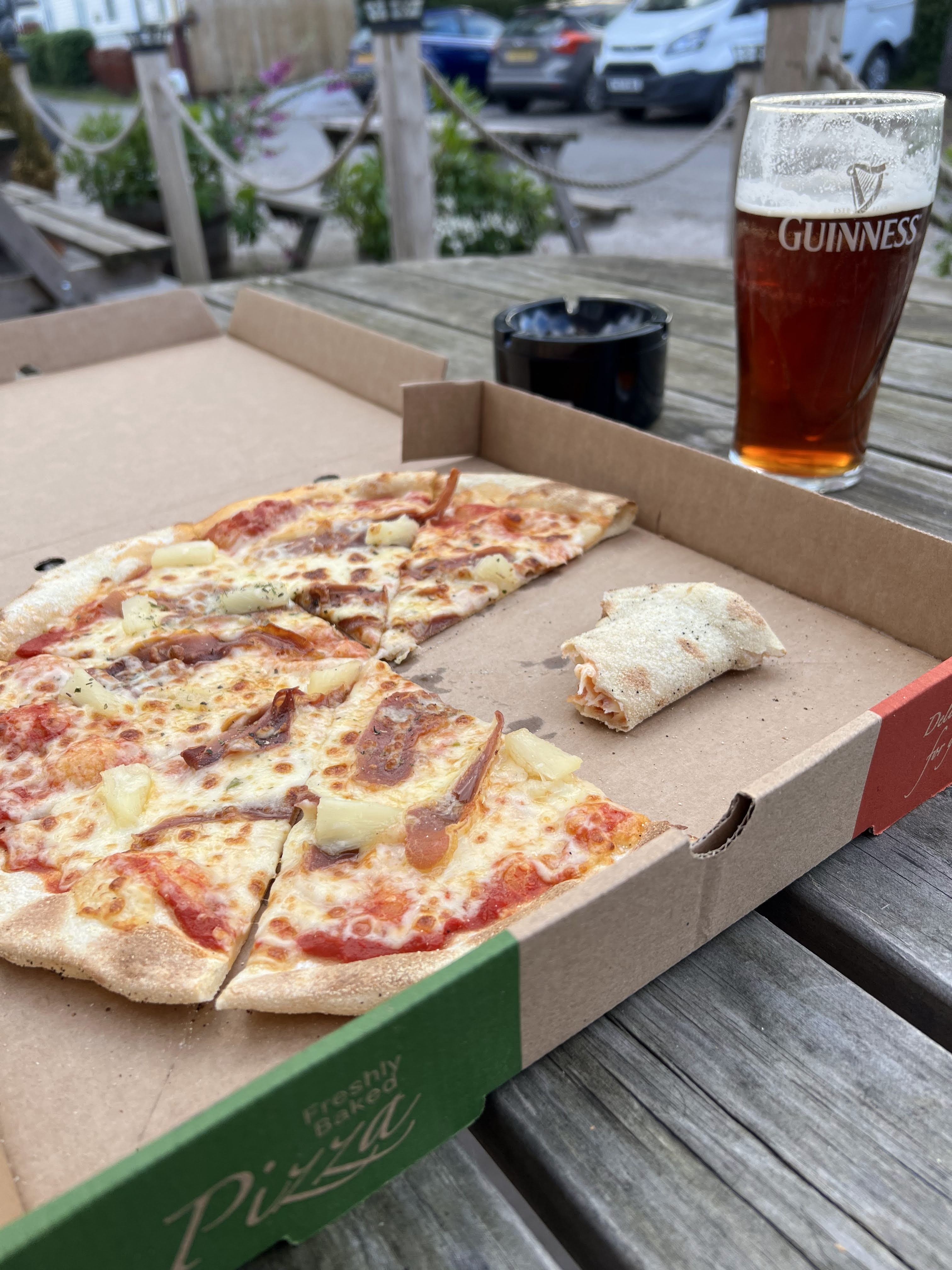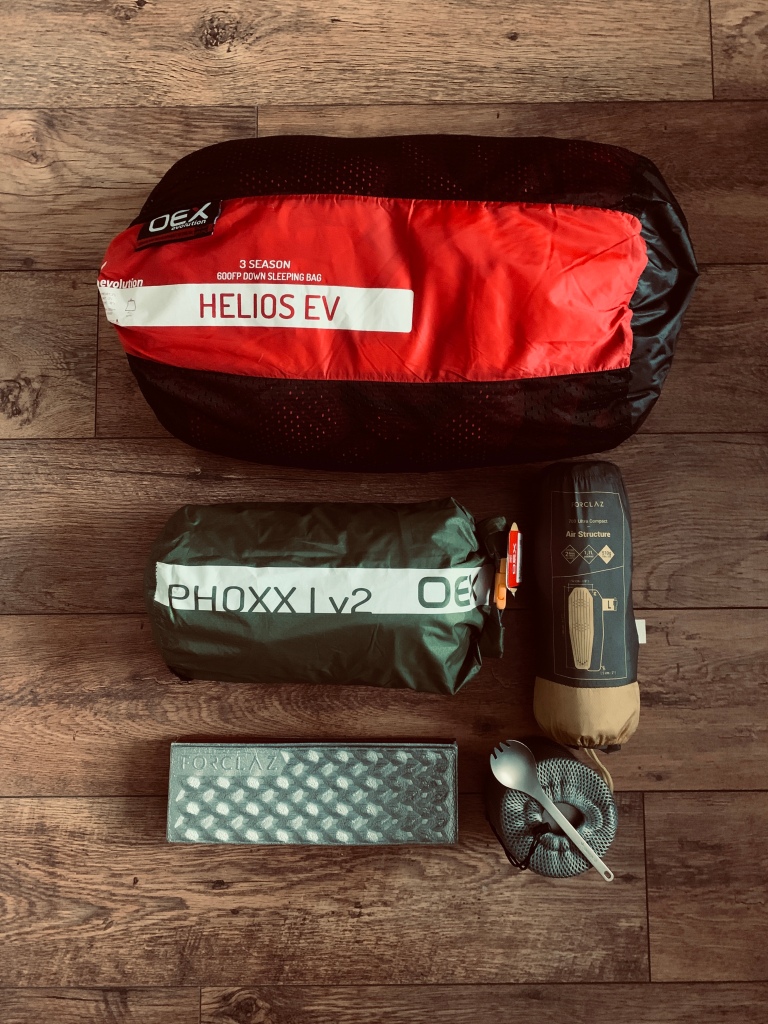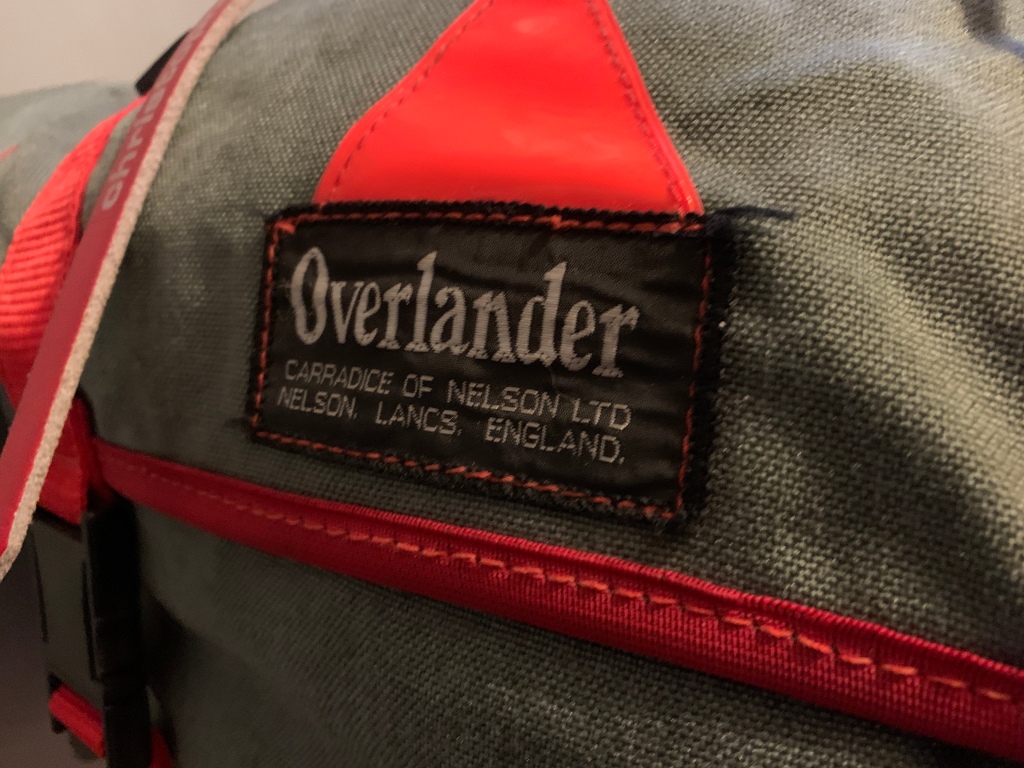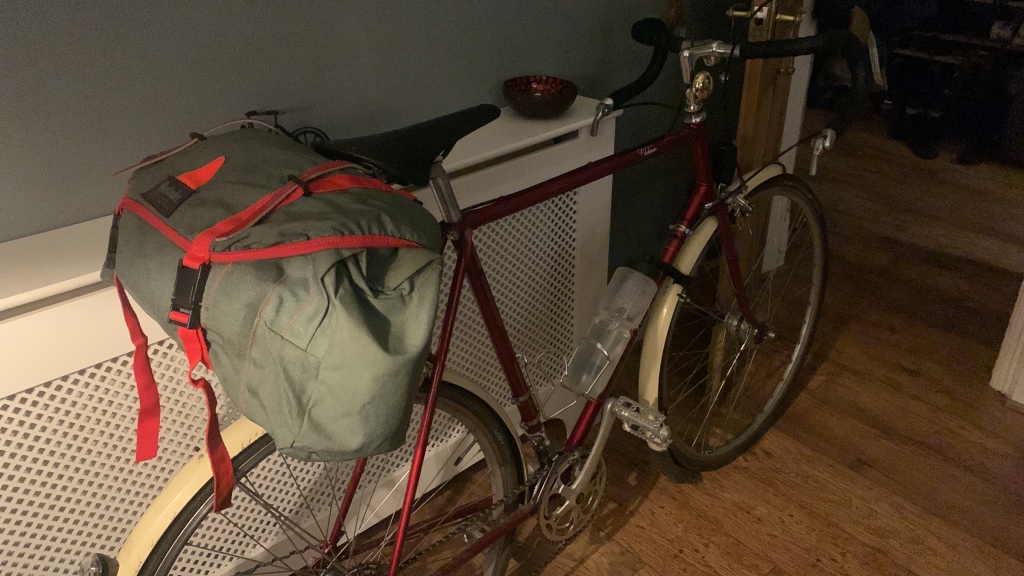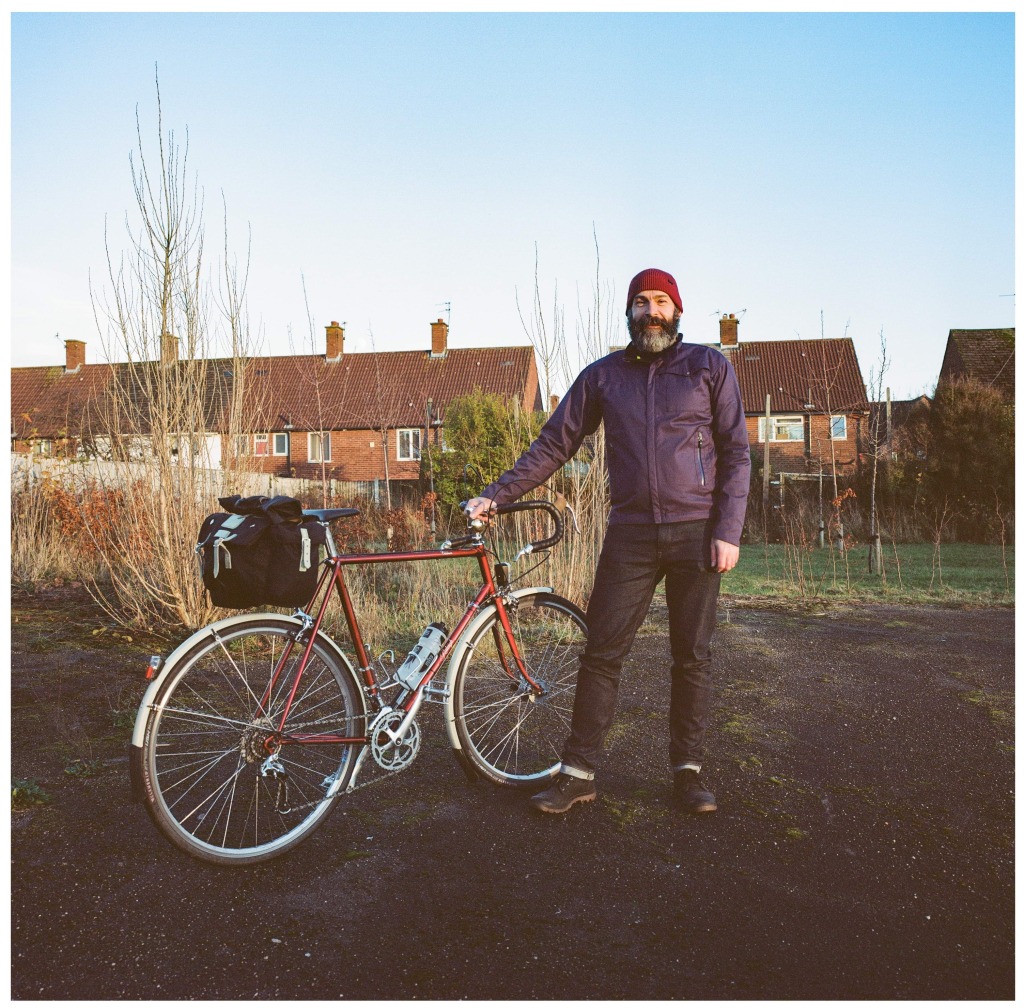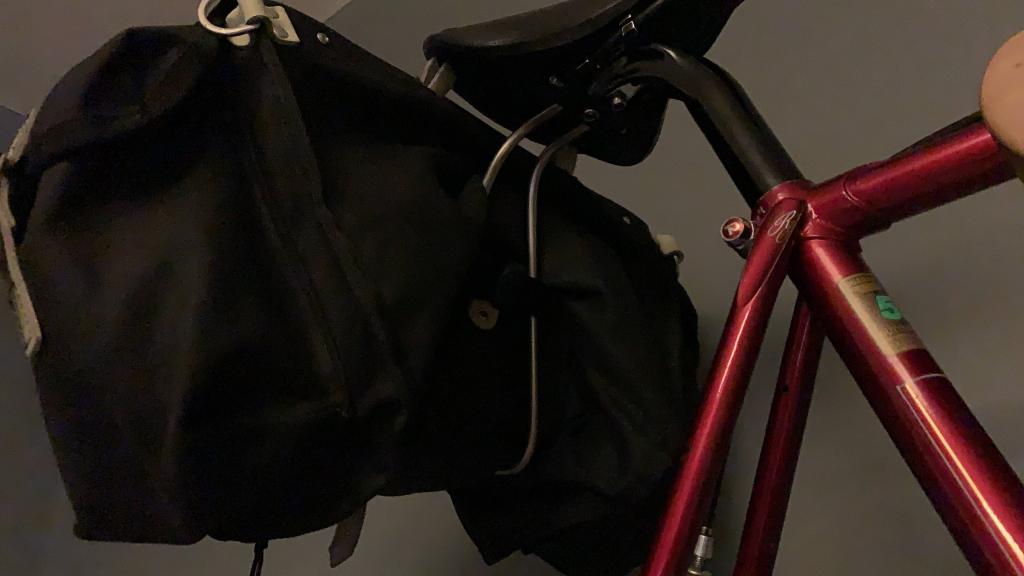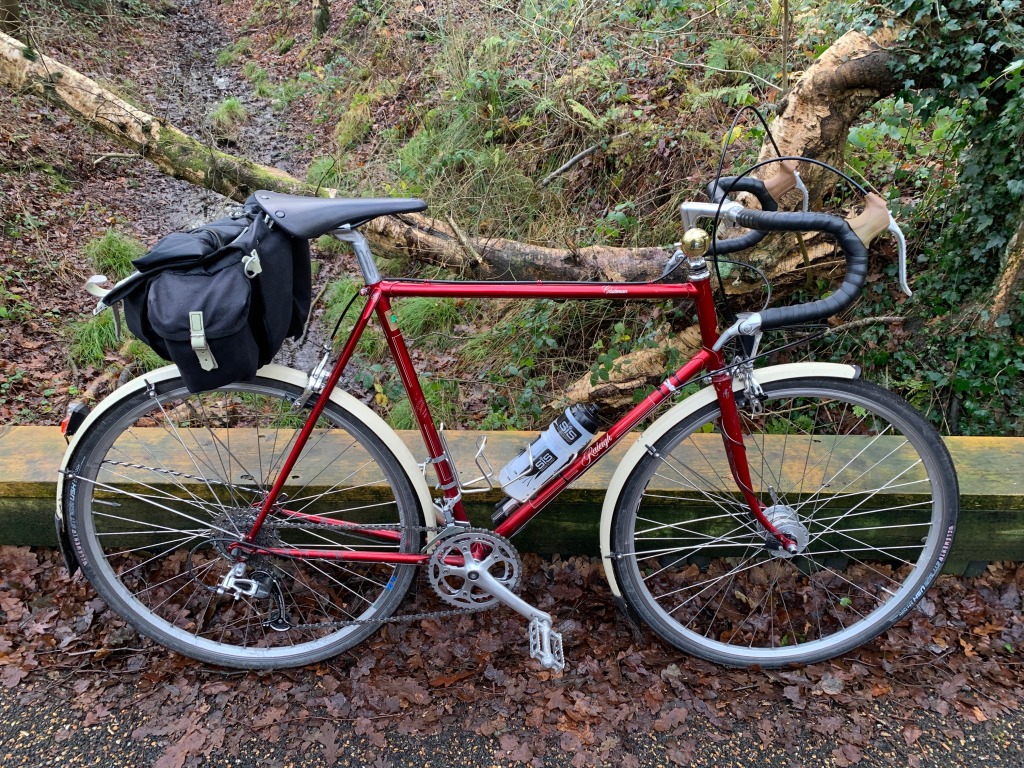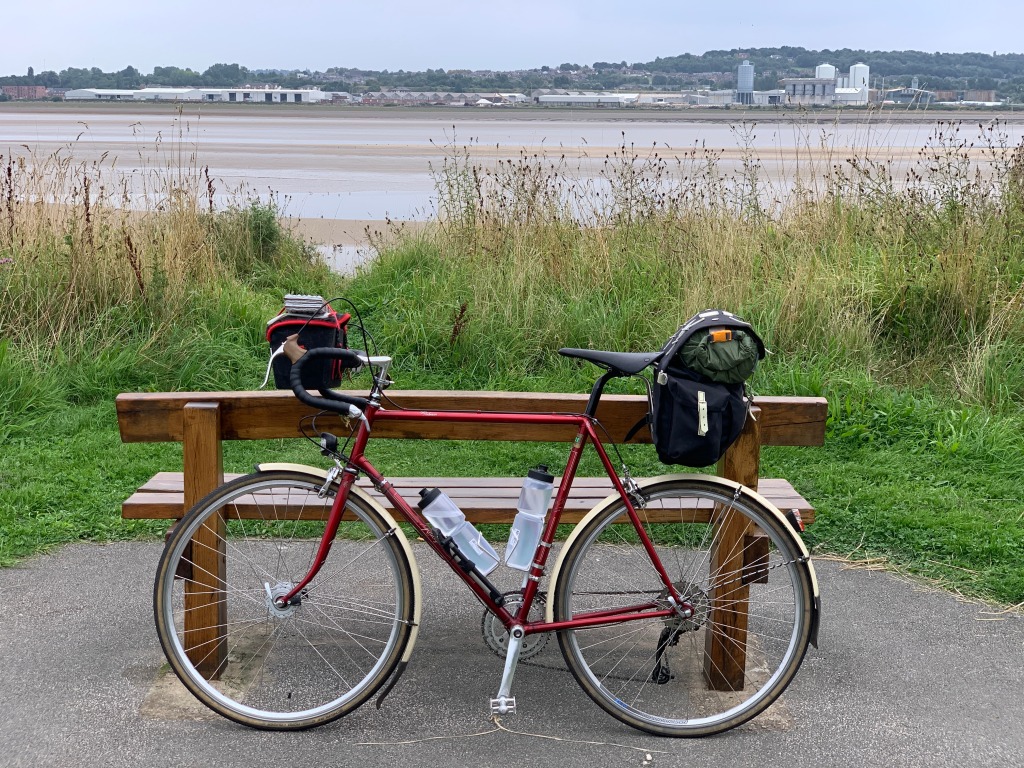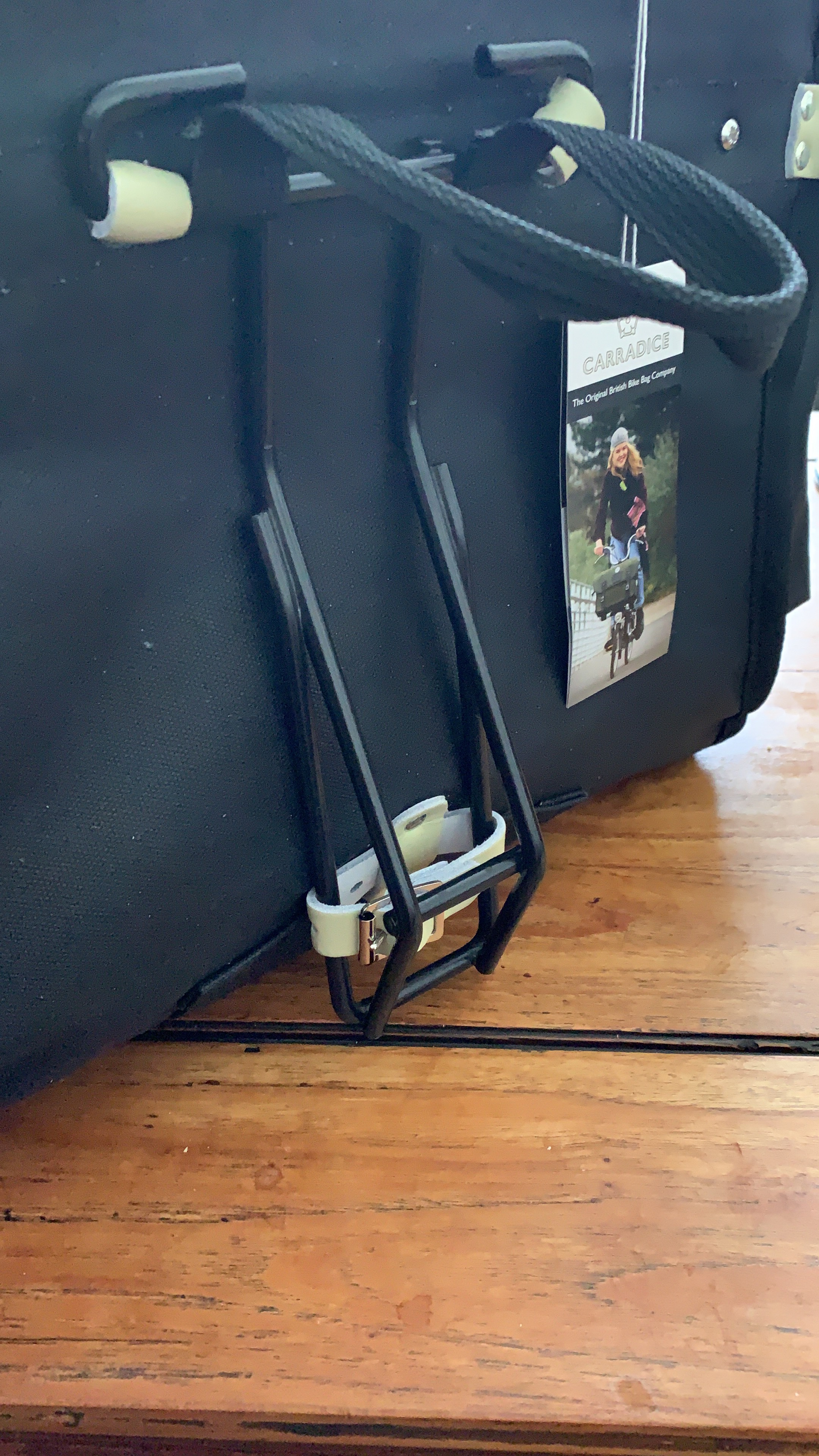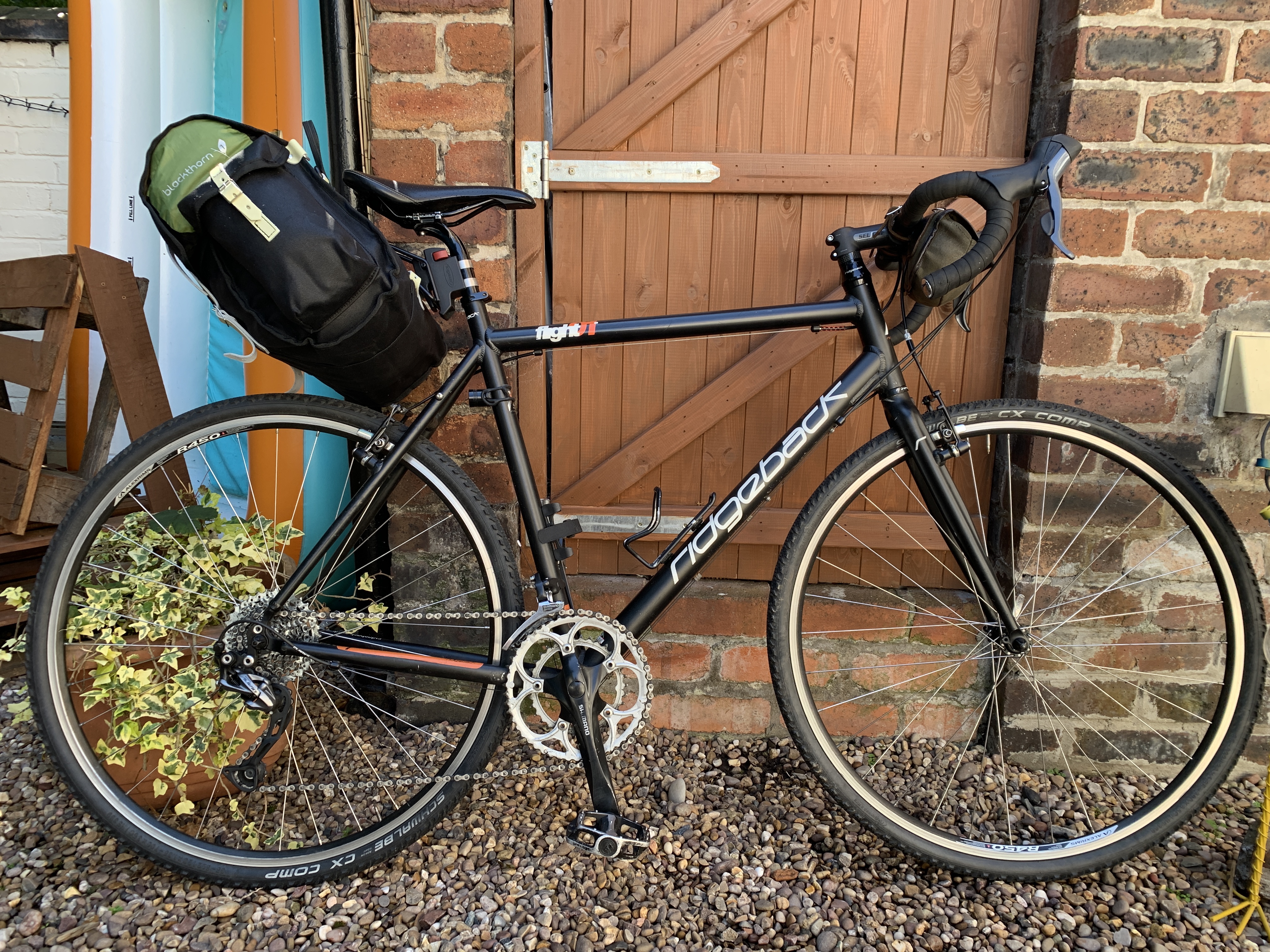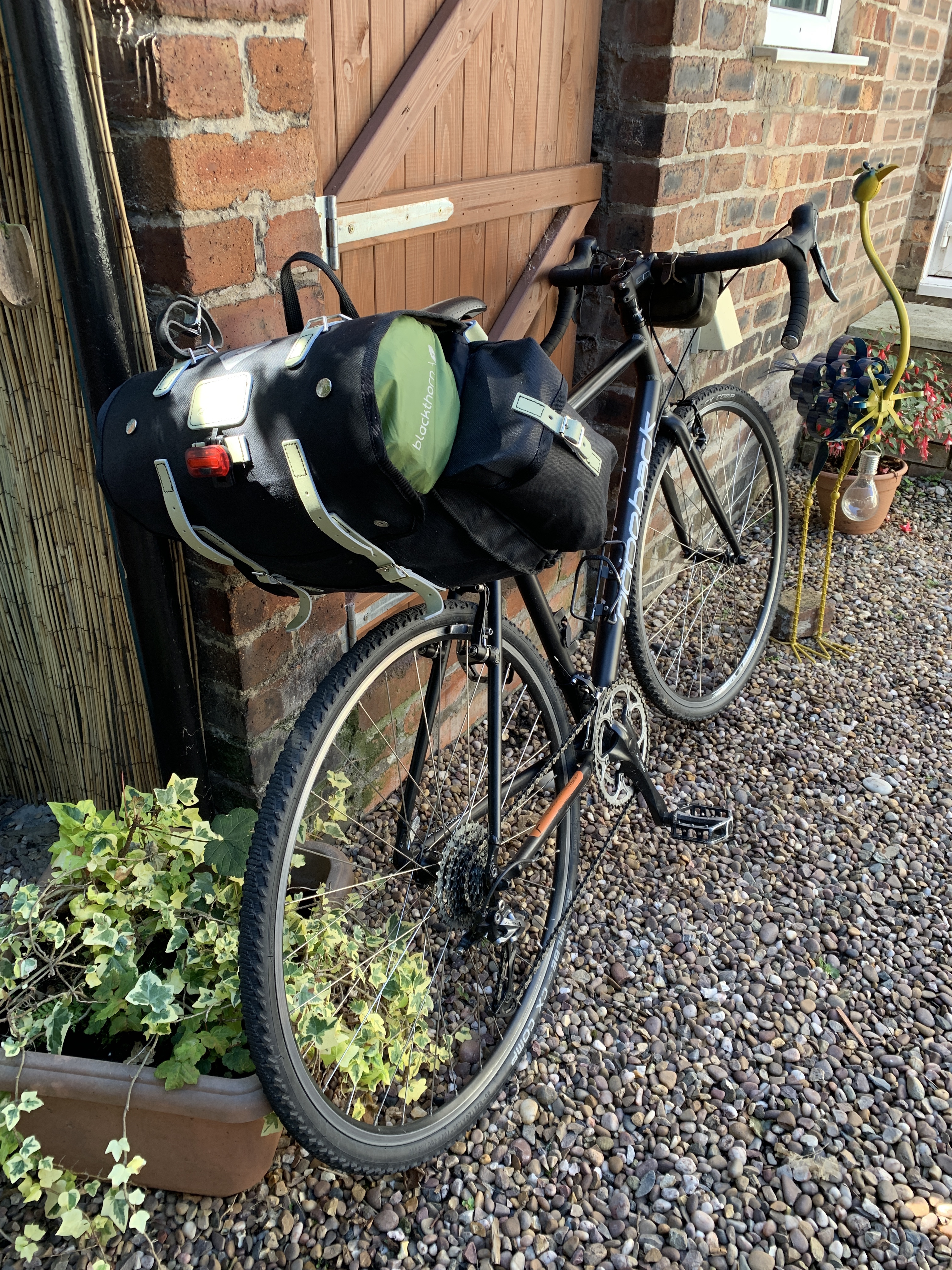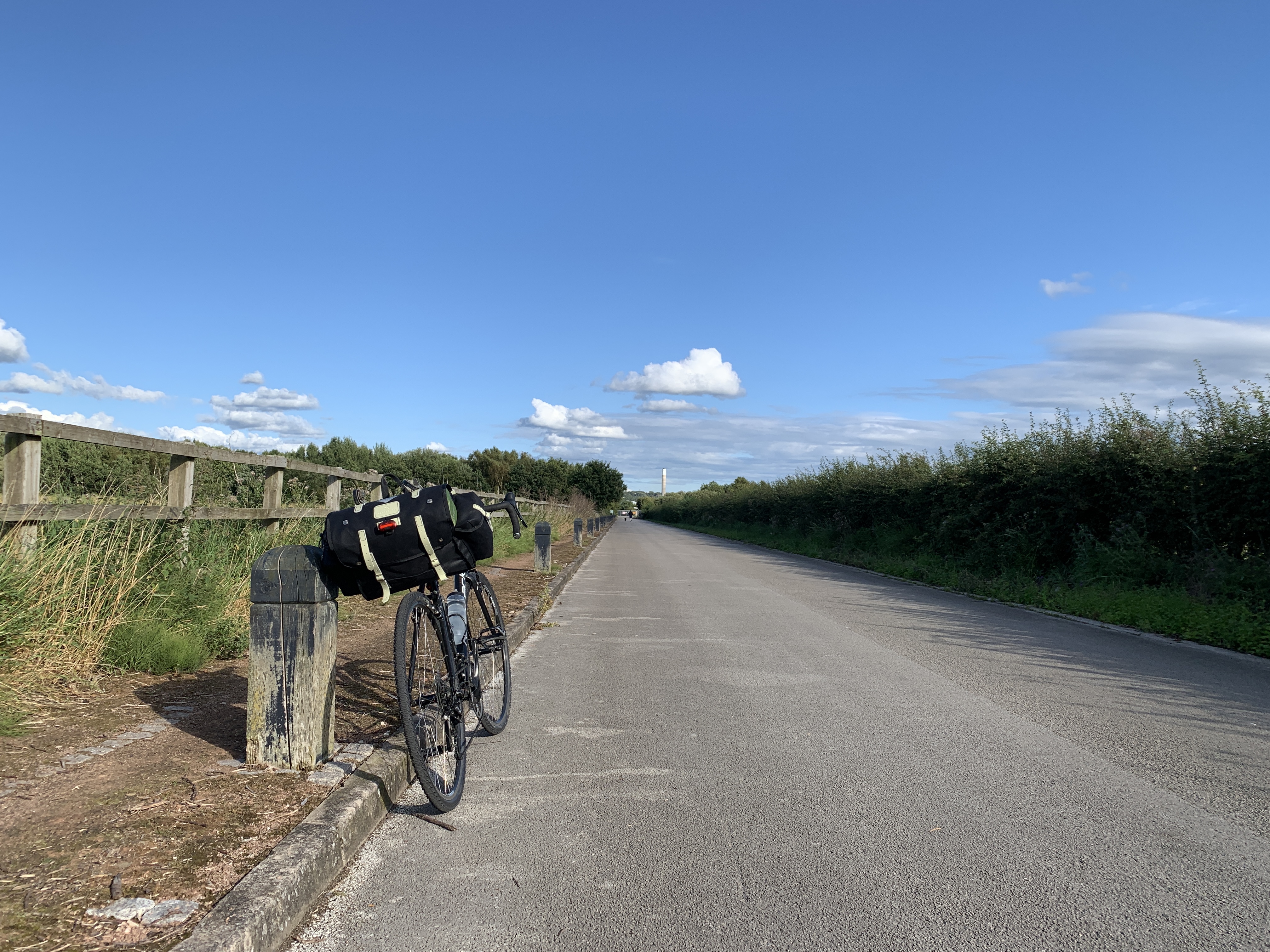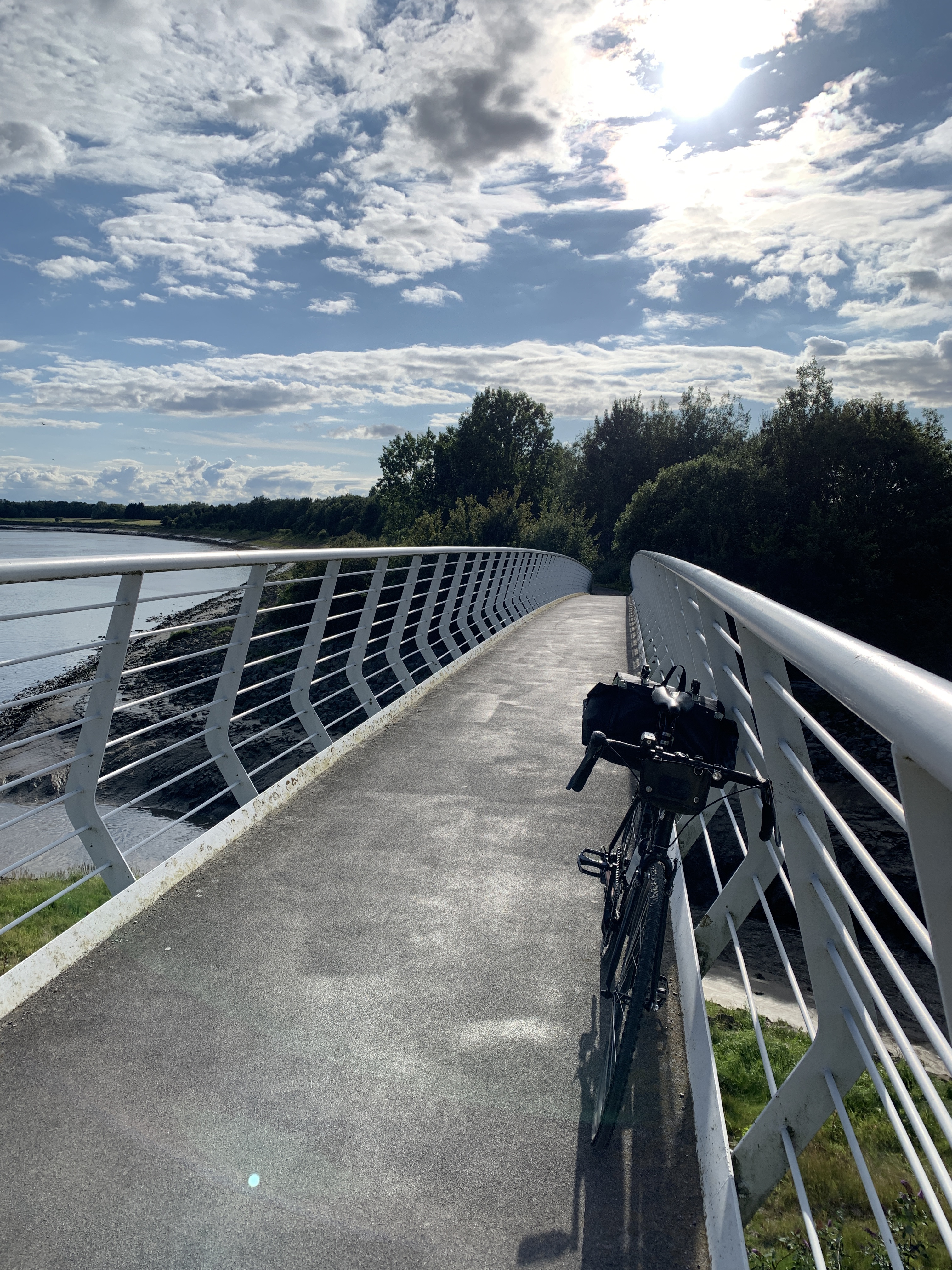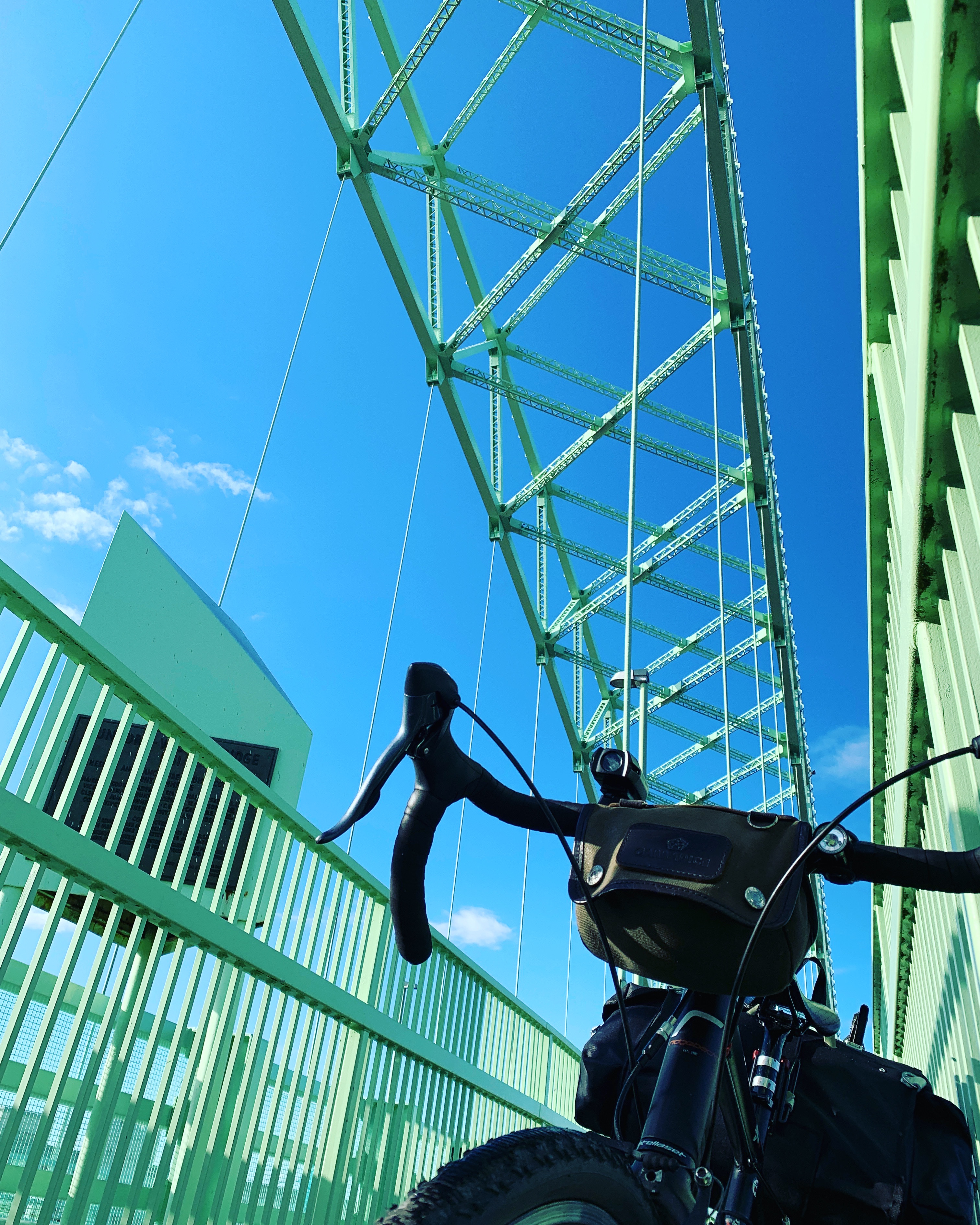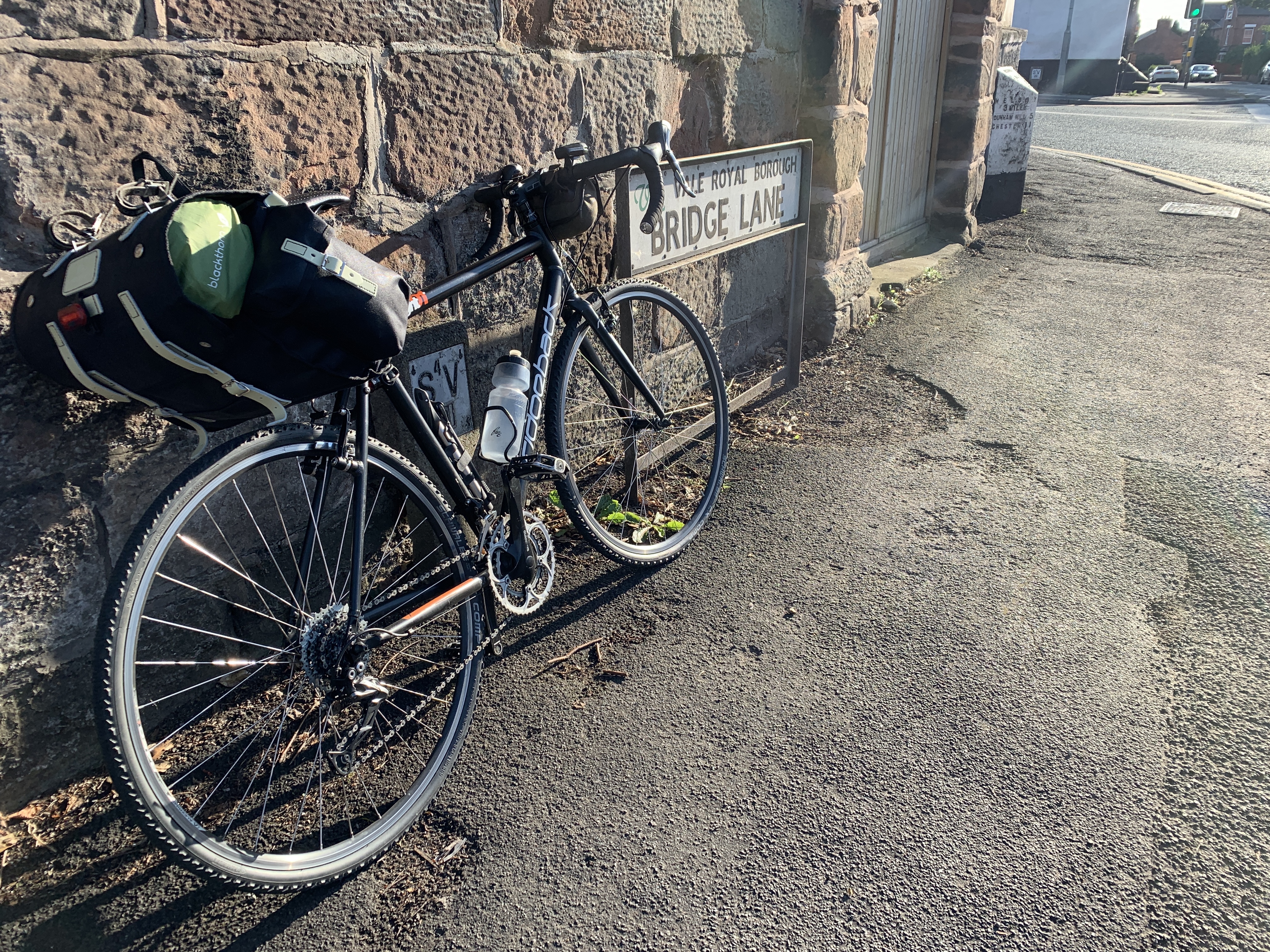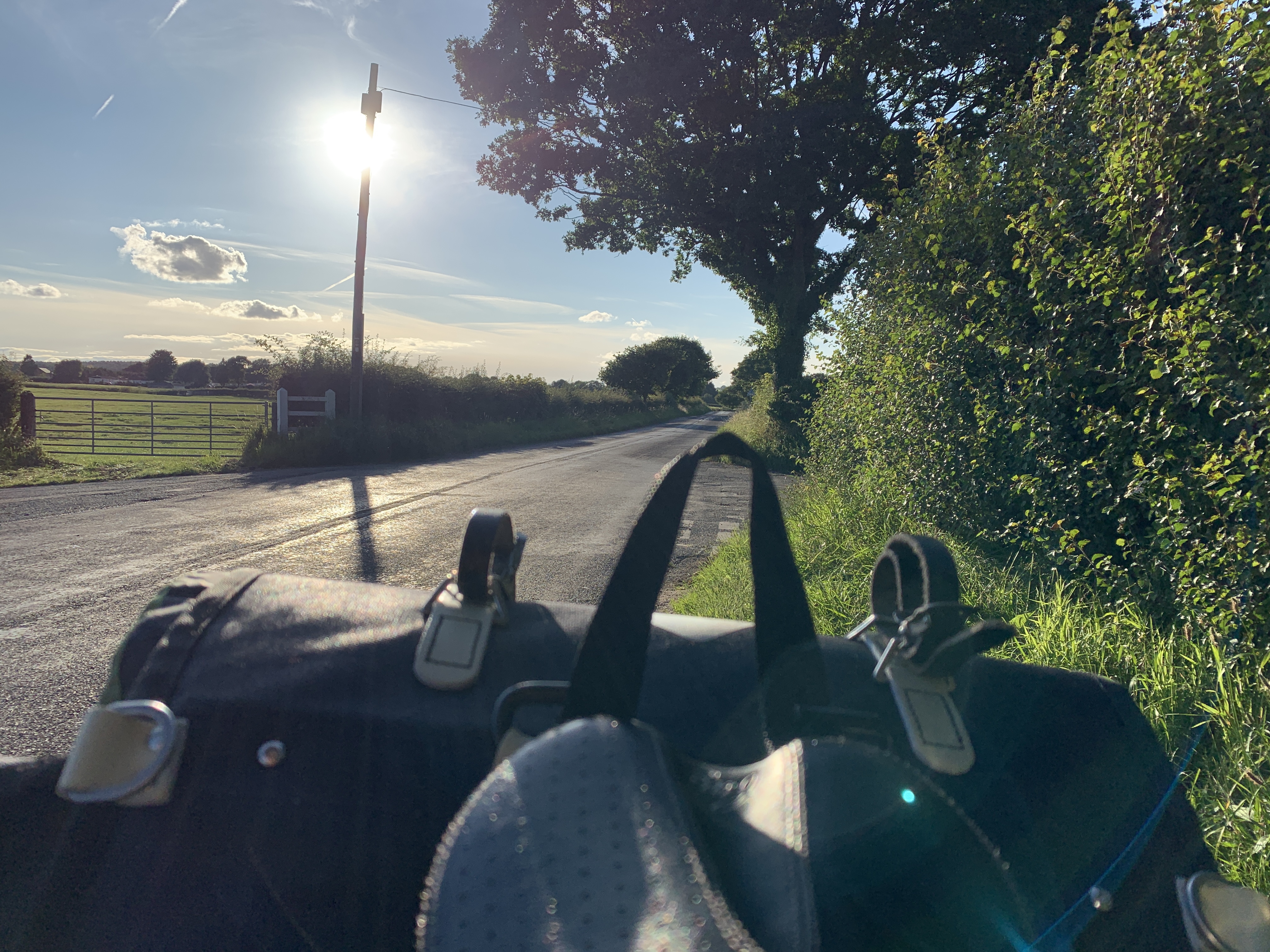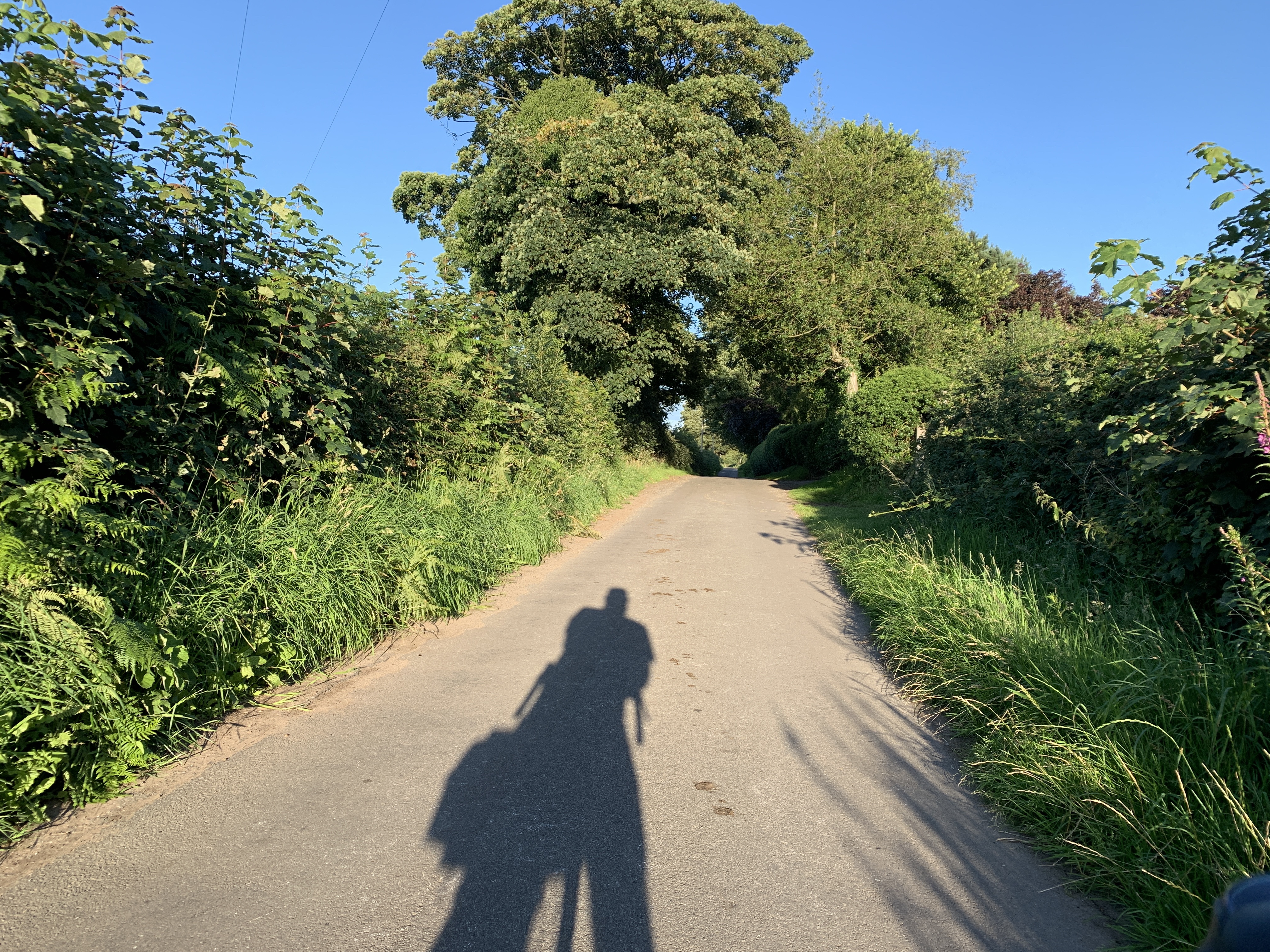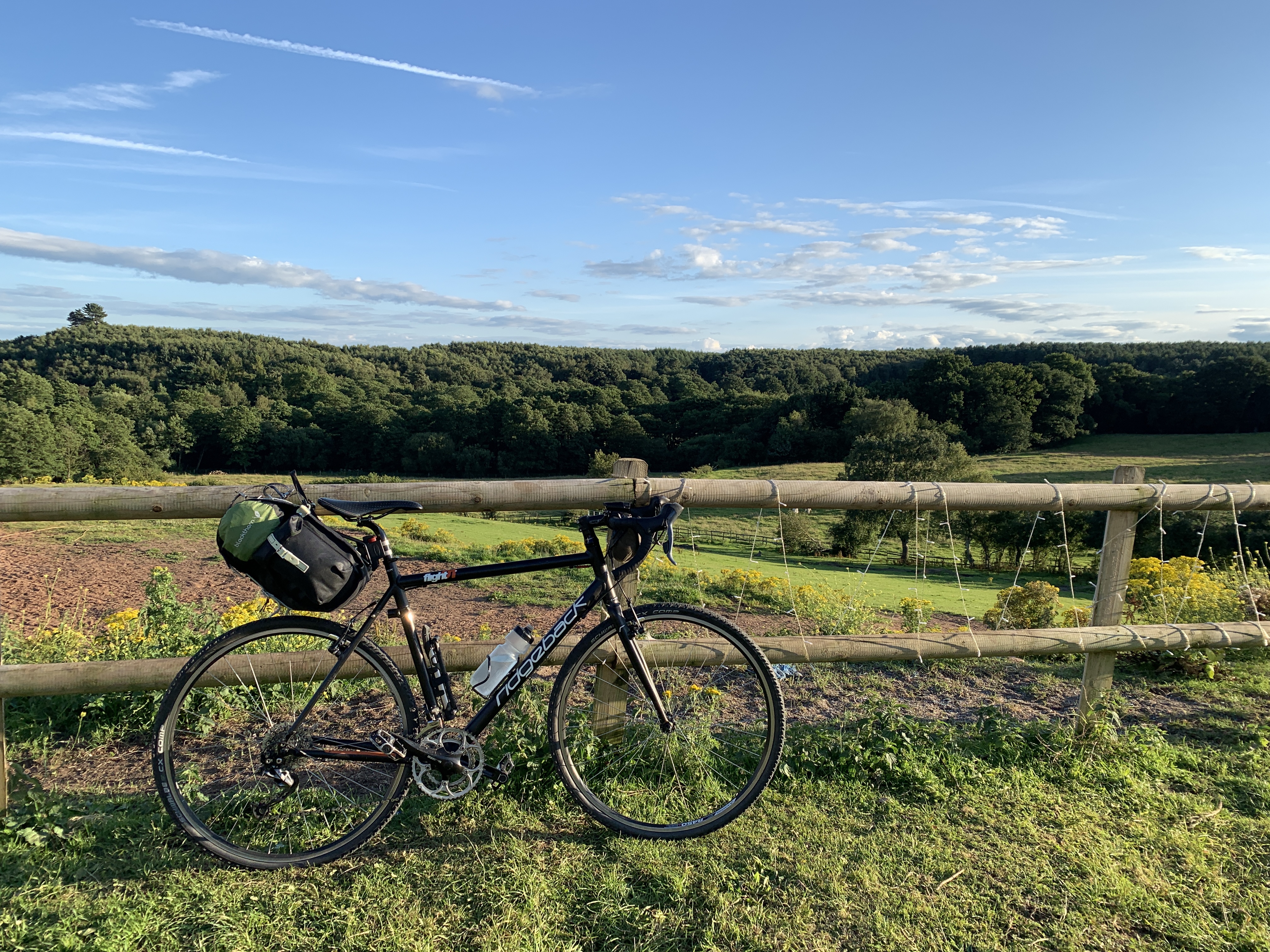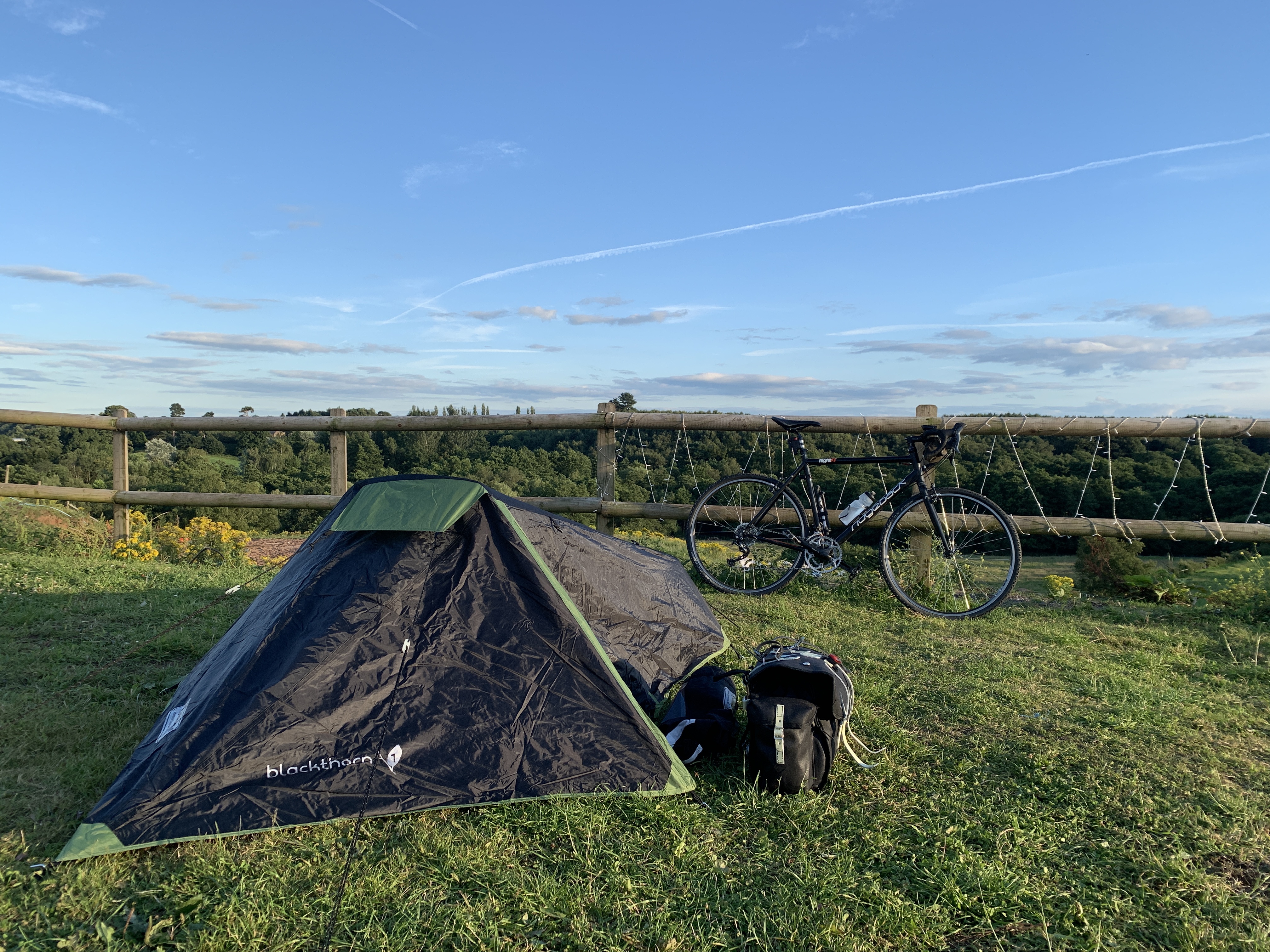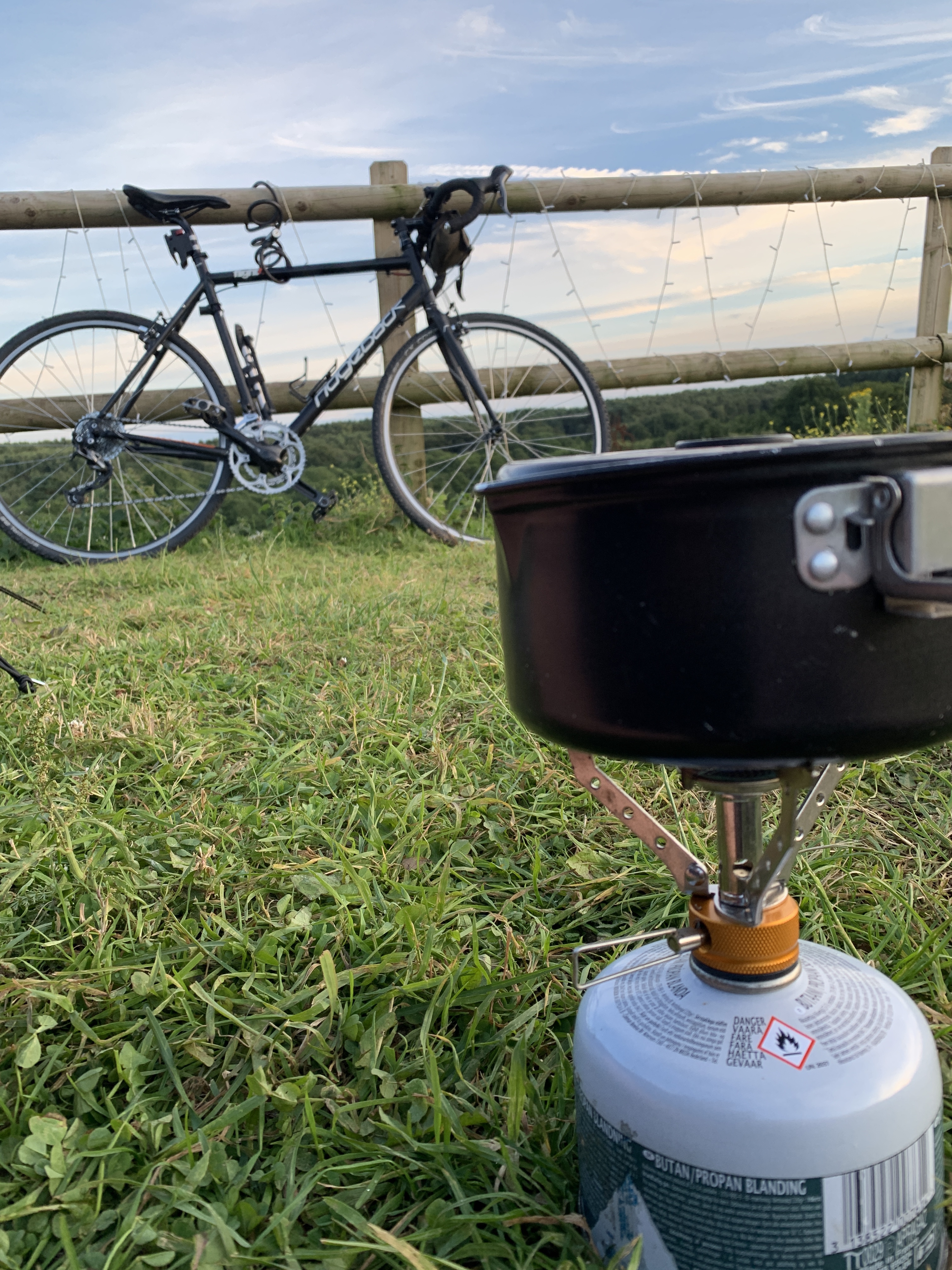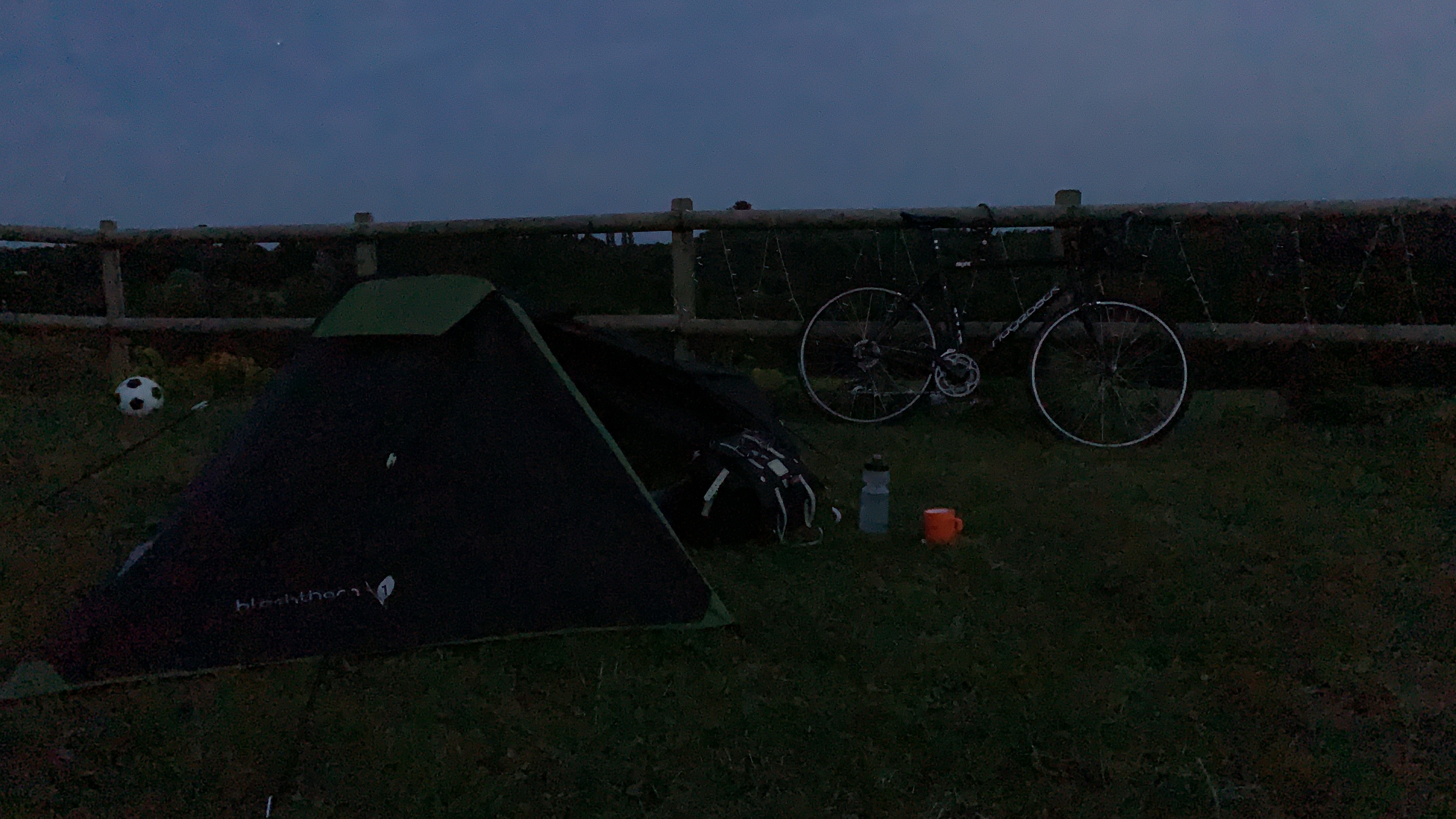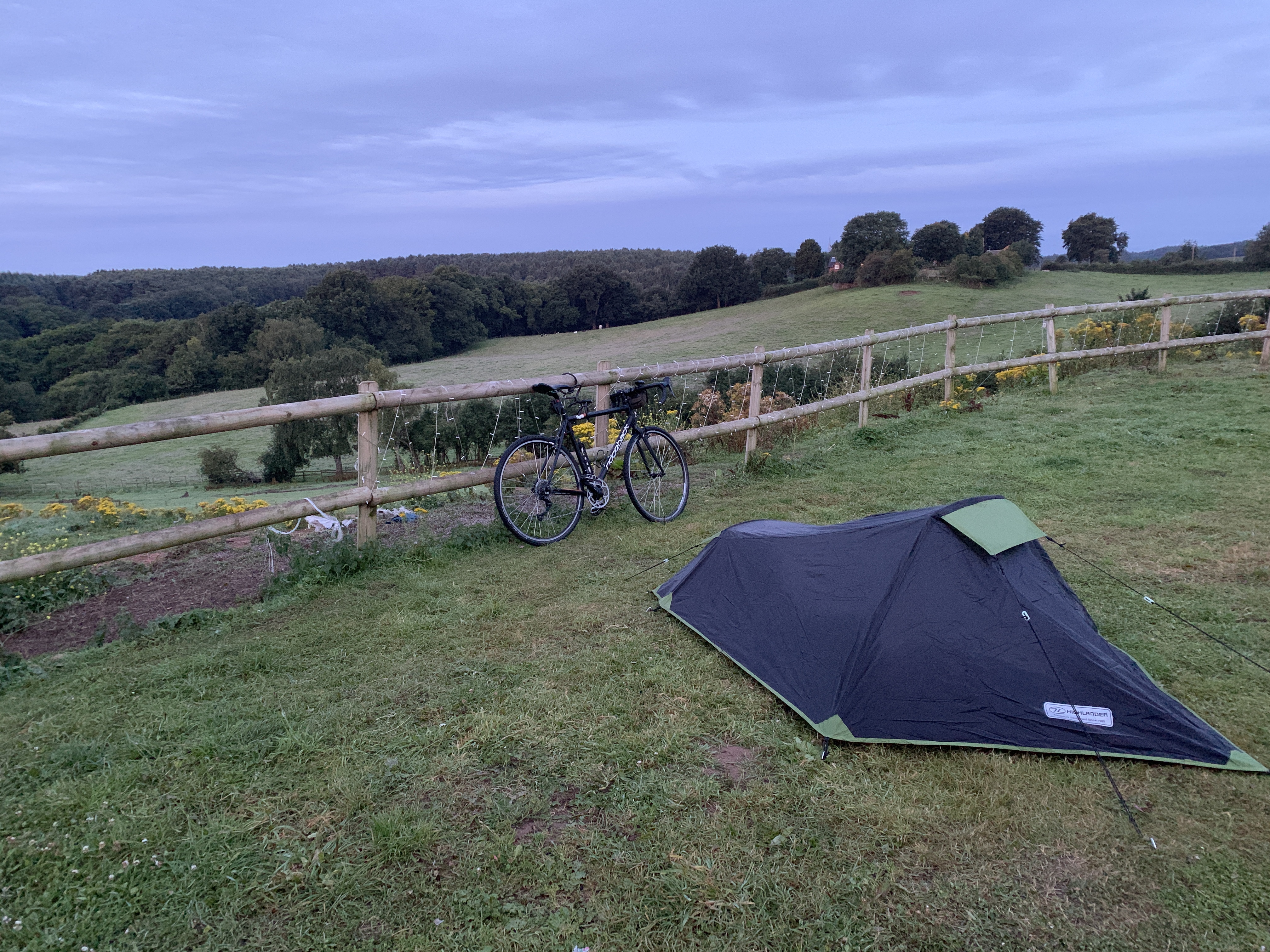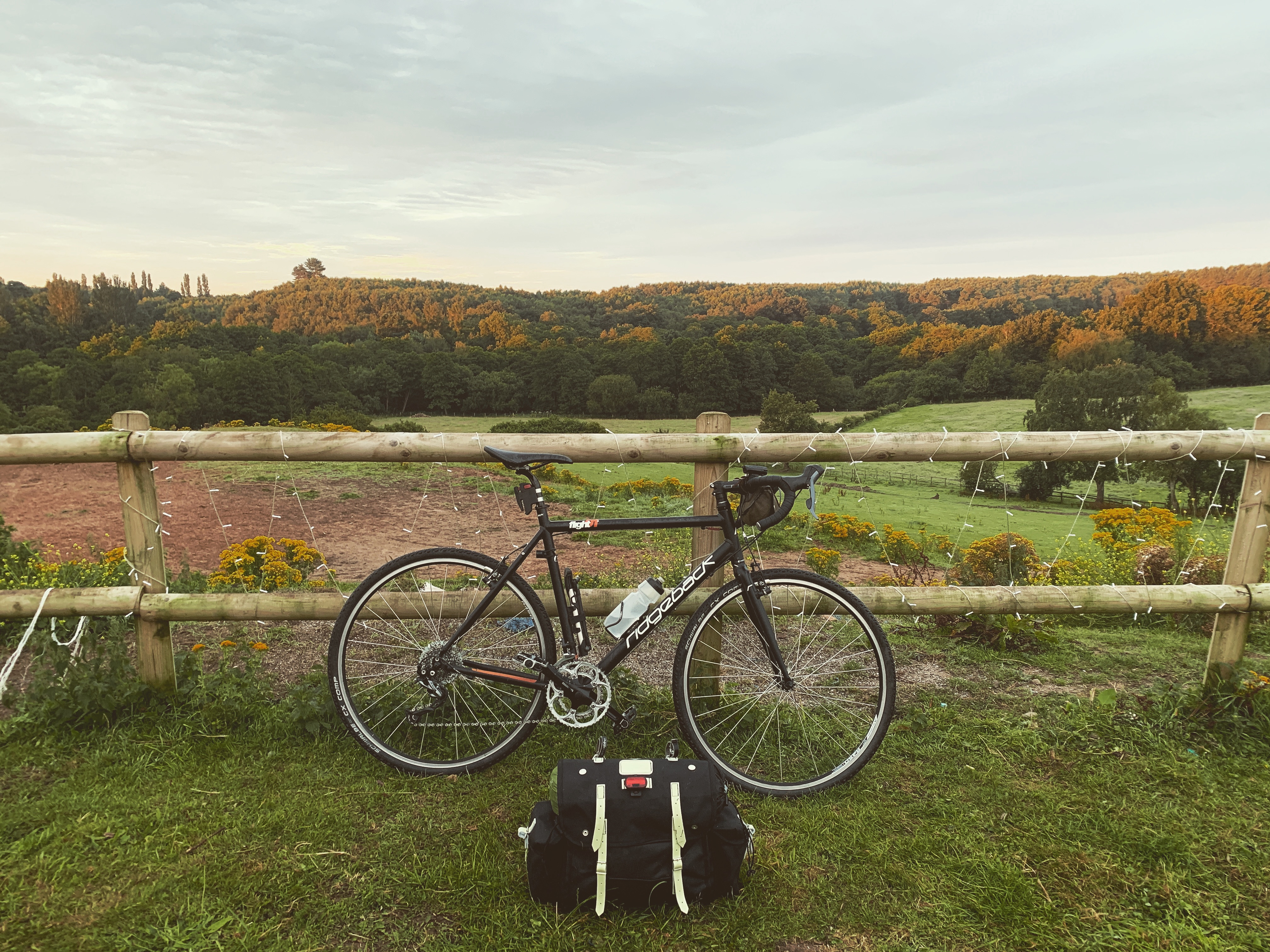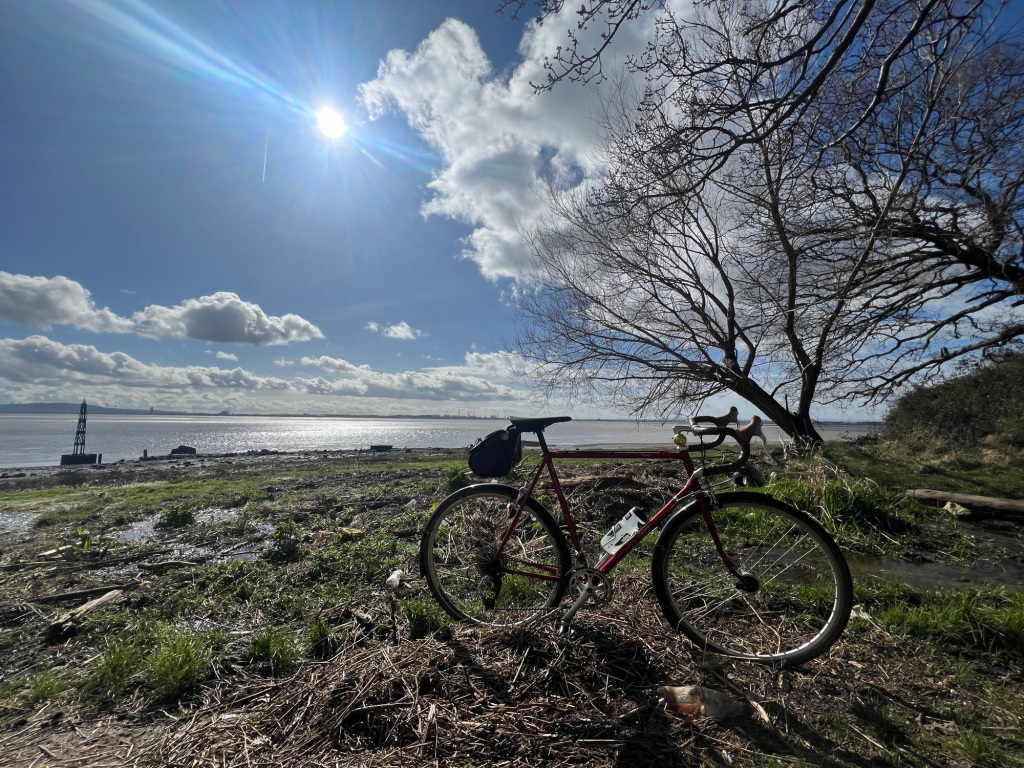
Oglet Shore was probably my first experience of roughstuff riding although at the time, I didn’t know that roughstuff was even a thing. So unburned with the expectation of categorisation my 16 year old self would head, as Virginia Woolf would have it, to the lighthouse, and then trace my way from Hale Point downstream on the Mersey estuary toward my then home in Garston.
35 years on and I’m still drawn to this Mersey paradise, sandwiched between the airport and the river, when the urge to disappear for a few hours strikes.
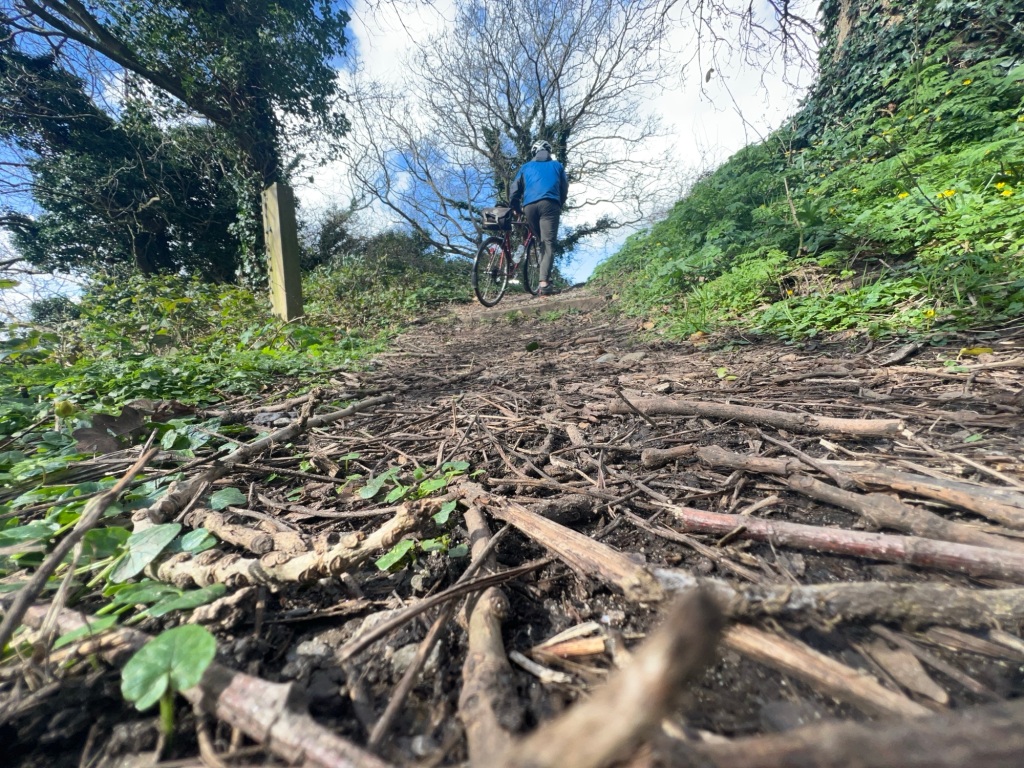
And so it was yesterday. A few hours presented themselves, too short for my usual north Liverpool loop but long enough to dip into the paths of the shore.
So I loaded up the Raleigh Clubman with my smallest saddlebag, my Junior, and headed south on the Trans Pennine Trail, following it around the eastern end of Speke before picking up a bridleway that skirts the eastern end of Liverpool John Lennon airport, leading to Oglet Lane.
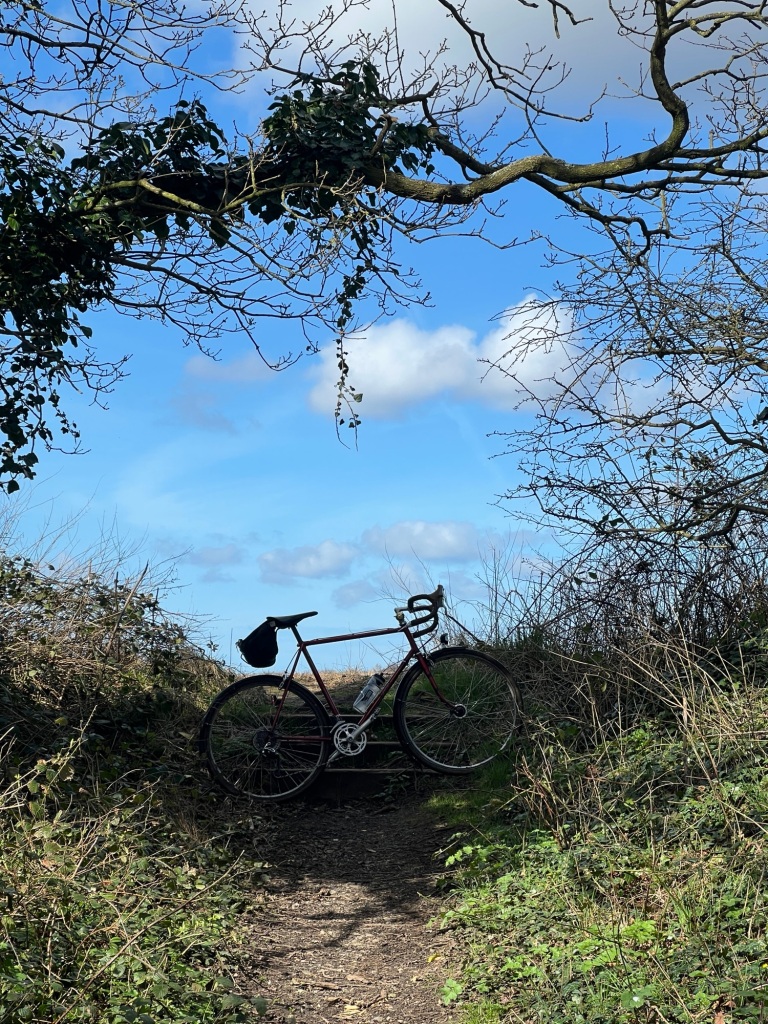
Once behind the airport you enter a forgotten world sandwiched between the wide estuary and the runways. To my left the watery vista opened up revealing the Clywdian range in the distance and the water shimmering in the foreground. To my right the regular entrances and exits of commercial jets and private aircraft. Around me, old farmhouses and incongruous control towers jutted from ploughed fields.
And it was the edge of one of these fields that led me down onto the shoreline path where the roughstuff began. While short this section of the ride was the toughest, navigating the boggy, furrowed path that skirted the fields and occasionally dipped down into little dells on sandy steps cut from the earth.
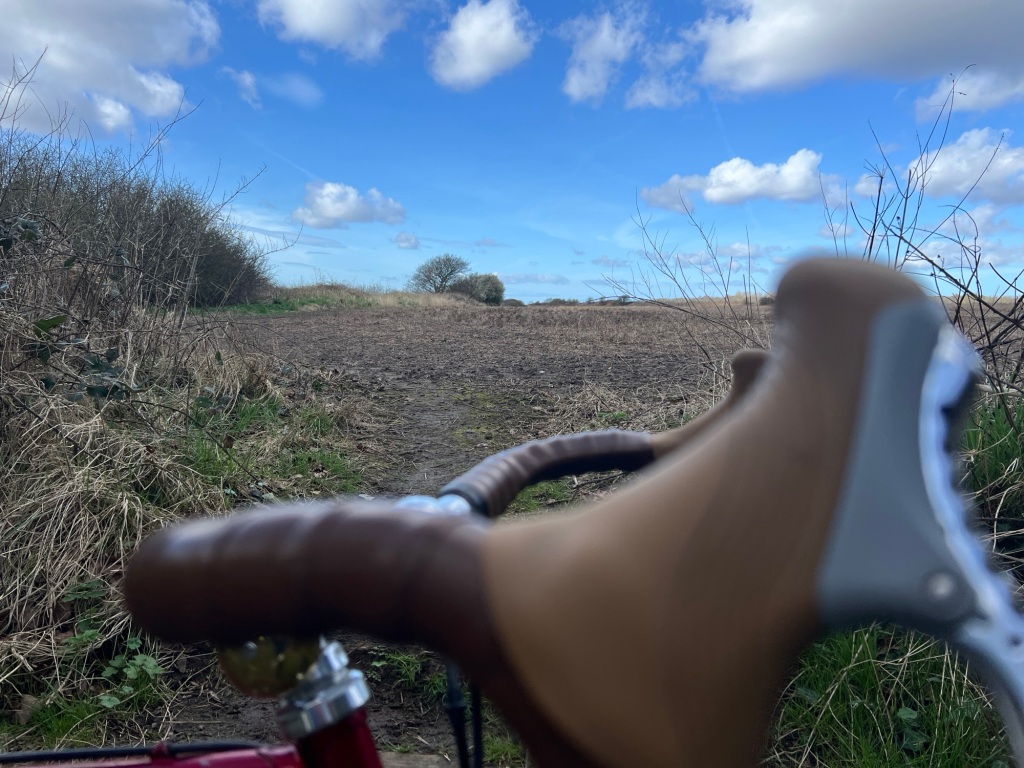
It was great fun, with a roughly 70:30 split of riding to pushing and carrying. A decent ratio for a rough stuff ride by all accounts.
Soon the open access narrowed to a tiny strip between Speke Hall and the river, with brambles as high as your head lining the muddy path. At this point the thick mud and sand had begun to clog the bike’s mudguards turning them into massive drum brakes, which made the ride home a proper workout.

Having managed not to snag my Paramo jacket on the thousands of brambles the path widened and led onto the disused runway of the old airport, now the Speke Garston Coastal Reserve. With mud flinging from my wheels I was up to speed again, rumbling along the runway past the sailing club and towards Garston.
Soon I was back in the real world of school run traffic and retail park madness. But for a brief couple of hours I was in local roughstuff heaven.

The idea of going local has really taken off post pandemic, exploring the forgotten places close to home. The flag-bearer of this movement is adventurer Alistair Humphreys, whose excellent website I would urge you to visit.
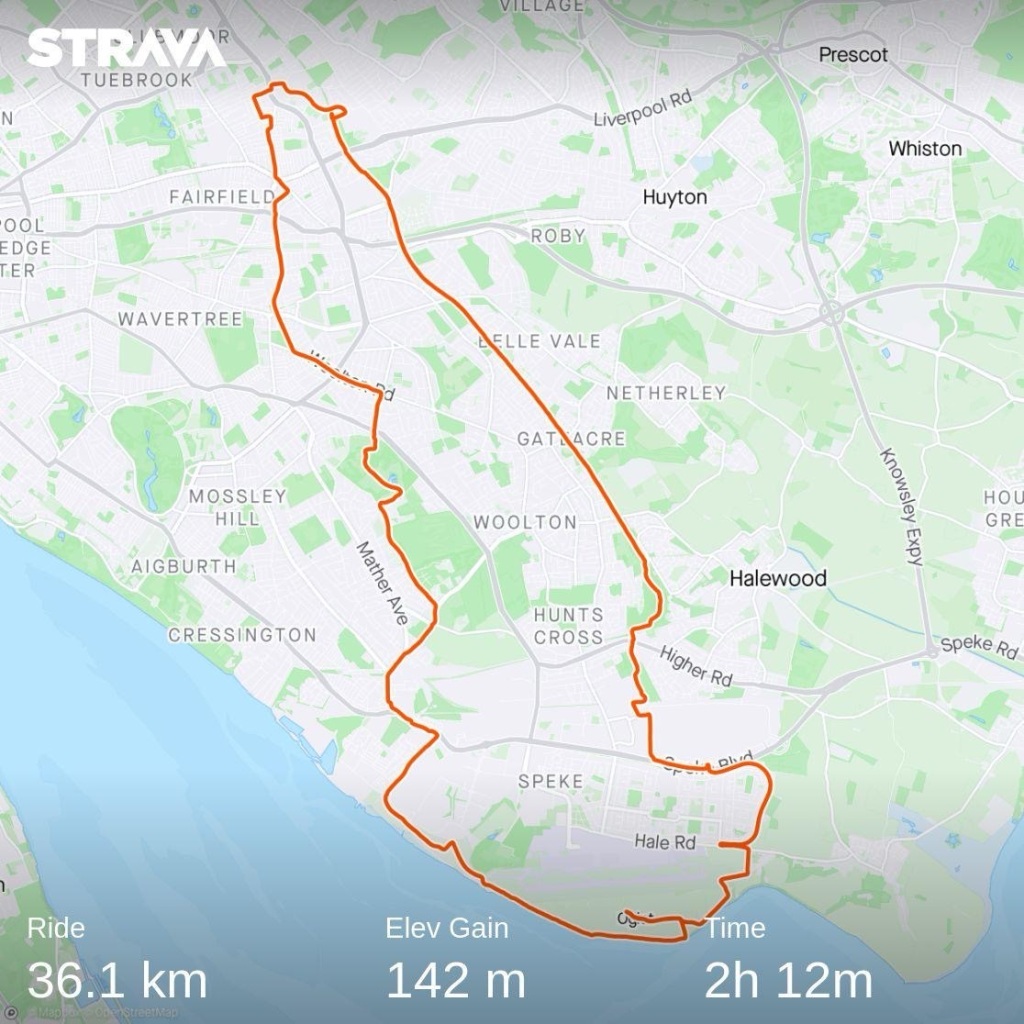
Following the ride I spent an enjoyable hour removing about a kilo of mud from the bike and restoring free movement of the wheels. As always, the final joy of any Roughstuff ride.





